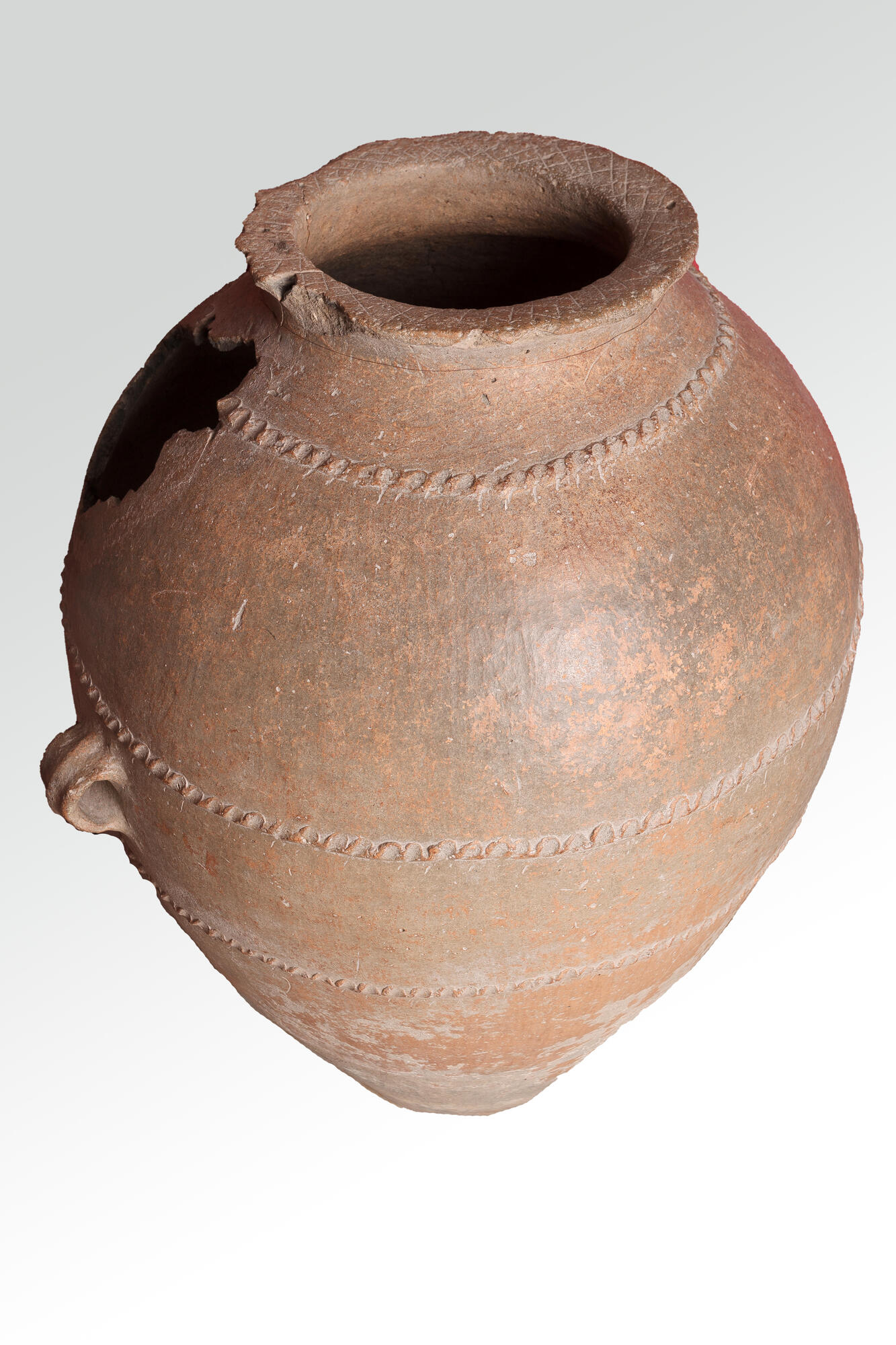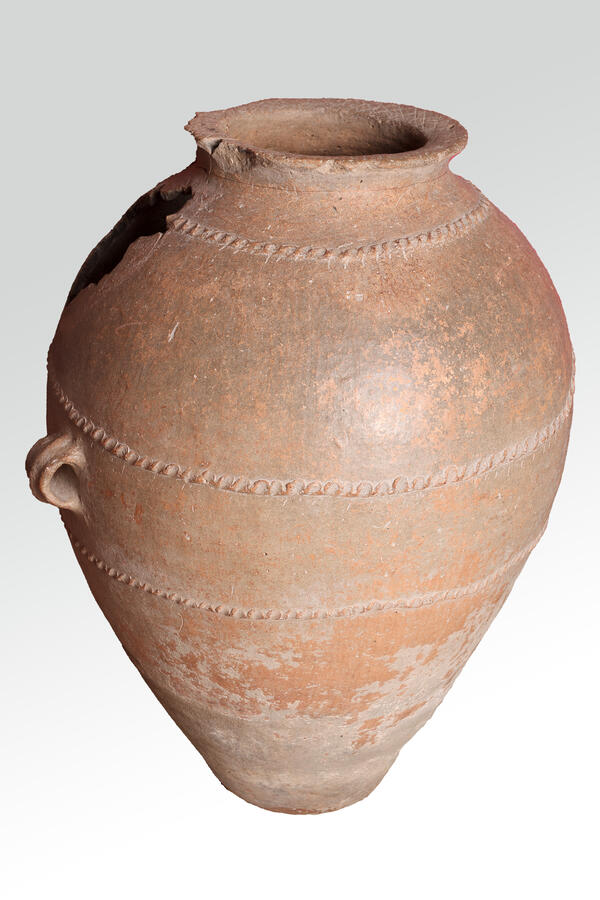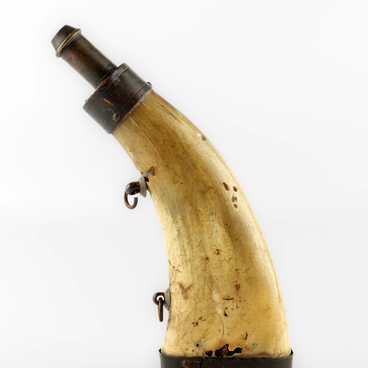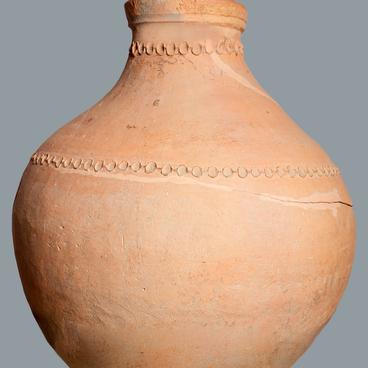Pithoi are storage vessels for liquid and semi-liquid foodstuffs (olive oil, wine, and grain). They were common on the Black Sea coast of the Northwest Caucasus during antiquity and the Middle Ages. When a pithos was broken, a spinning whorl, fishing sinkers or other small items would be made from its shards. Cracked pithoi could be repaired. Archaeologists find vessels that are “repaired” with lead rivets.
In the Middle Ages, pithoi were often used as funerary urns and placed in burial mounds. Finds of such burial urns are not uncommon for the Black Sea coast of the Northwest Caucasus. They illustrate one of the burial rites that was most widespread in the Middle Ages — cremation. Burning a dead body was supposed to help provide a quicker transition to the afterlife and avoid exposure to wild animals or evil people. A proper burial ceremony was one of the conditions for a soul to enter the afterworld. Experts believe that this is due to the influence of nomadic peoples, for whom the rite of cremation was the main one. There were various types of cremation burials. Along with pithoi, amphorae, jugs and special small vessels with clay lids could be used as burial urns. Burial pithoi were covered with sandstone lids.
Specialists often find mounds with burials of horses, which occupied a special place in the culture of nomadic peoples. It is noteworthy that the grave goods were often placed not only next to the urn, but also directly in it, along with the remains of the buried. These could be small knives, fire-strikers, and bronze buttons. Based on the degree of preservation, archaeologists can tell whether the objects were with the deceased during the rite of cremation or whether they were laid after.
While digging trenches from 1942 to 1943 on the territory of the “Chernomorets” boarding house in the city of Gelendzhik, a pithos of the 12th–13th centuries with a sandstone lid was uncovered. This pithos had been used as а funerary urn. It entered the museum only on March 19, 1948. Until that time, the object stood for a long time in the open air, and no grave goods were preserved inside. However, the remaining traces of ash at the bottom of the pithos indicated that the pithos had been used in the funeral rite.
In the Middle Ages, pithoi were often used as funerary urns and placed in burial mounds. Finds of such burial urns are not uncommon for the Black Sea coast of the Northwest Caucasus. They illustrate one of the burial rites that was most widespread in the Middle Ages — cremation. Burning a dead body was supposed to help provide a quicker transition to the afterlife and avoid exposure to wild animals or evil people. A proper burial ceremony was one of the conditions for a soul to enter the afterworld. Experts believe that this is due to the influence of nomadic peoples, for whom the rite of cremation was the main one. There were various types of cremation burials. Along with pithoi, amphorae, jugs and special small vessels with clay lids could be used as burial urns. Burial pithoi were covered with sandstone lids.
Specialists often find mounds with burials of horses, which occupied a special place in the culture of nomadic peoples. It is noteworthy that the grave goods were often placed not only next to the urn, but also directly in it, along with the remains of the buried. These could be small knives, fire-strikers, and bronze buttons. Based on the degree of preservation, archaeologists can tell whether the objects were with the deceased during the rite of cremation or whether they were laid after.
While digging trenches from 1942 to 1943 on the territory of the “Chernomorets” boarding house in the city of Gelendzhik, a pithos of the 12th–13th centuries with a sandstone lid was uncovered. This pithos had been used as а funerary urn. It entered the museum only on March 19, 1948. Until that time, the object stood for a long time in the open air, and no grave goods were preserved inside. However, the remaining traces of ash at the bottom of the pithos indicated that the pithos had been used in the funeral rite.





